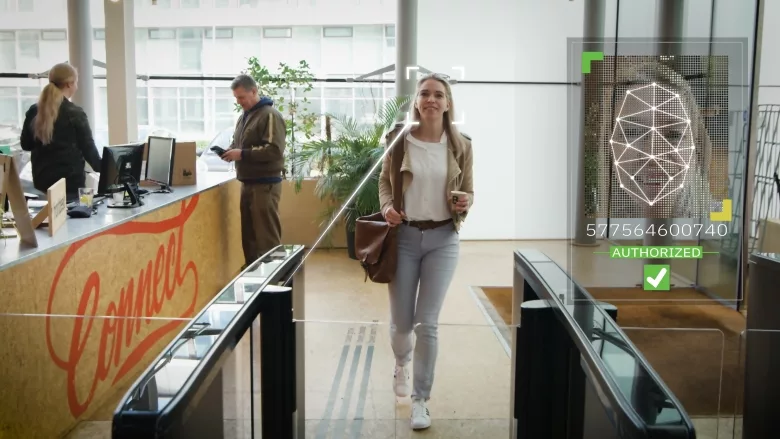Four steps to entrance security success

Image courtesy of Boon Edam
All entrance security solutions are as unique as the large organizations that install them. Access control products and their functions vary widely, from revolving doors to optical turnstiles and security portals. Similarly, every organization has differing corporate cultures and needs that guide their decision-making.
While organizations and the security solutions they choose to install may look different, there is one thing that binds them — their framework for success. Fortune 500 companies and the like employ four basic steps to ensure their physical security deployments run smoothly. By adopting these tactics, any large organization can feel confident in their entrance security decisions.
1. Vet the manufacturer
Any security director or integrator should have a deep understanding of the manufacturer they will be working with. That is not to say that working with a new vendor is frowned upon, but rather, all parties involved should get to know one another. To do this, both the end user and manufacturer should ask questions and respond honestly. Take time at the beginning of the relationship to work through the critical questions to avoid issues down the road.
Perhaps most importantly, consider the manufacturer’s capacity to scale. Question the ability of their products to be upgraded, modified or adjusted as necessary. Conversely, clearly communicate current organizational needs and potential future needs. Regardless of budget, installing new entrance security measures is a long-term investment. A manufacturer should build confidence in their client that their investment is reasonably future-proof.
2. Use these seven considerations
Before starting on a project, security decision-makers will want to consider the critical elements of an entrance security solution. Not only will the following considerations assist decision-makers in choosing the best entrance products for their facility, but they can also be used as criteria for vetting the manufacturer.
- Throughput: Consider the types and quantities of people moving through the various areas of a facility.
- Security: Think about the risks that will be mitigated after the system deployment is complete. How does each product address issues like piggybacking and tailgating?
- Safety: Ensuring the safety of all assets — people, property and information — is a key function of entrance security. Contemplate what in the building is worth protecting and act accordingly.
- Aesthetics: An entryway is an initial first impression; therefore, it should match the organization in tone and presence.
- Technology: Integrating innovative technology is great for future-proofing, but consider how frequent technology updates may impact costs.
- Comfort: Imagine walking through the proposed entrance solution. Is it easy to use and navigable?
- Service: Service includes the service of both the physical product and the user. Keep this in mind when vetting a manufacturer.
Beyond project managers and security directors, all project stakeholders should be made aware of the seven considerations. This aids in decision-making by providing various points of view and can reduce headaches down the road. At the end of the day, a company is liable for any safety or security misstep. Therefore, stakeholders and C-suite employees should, at the very least, be aware of any physical security solutions being installed.
3. Deploy in layers
Corporate campuses have layers. The outermost layers are likely for public access, but as we move toward the facility’s center, the layers get more complex and require higher levels of clearance to access. Each layer serves a separate purpose and requires its own unique entrance product to mitigate the applicable risks. Each campus and facility is different, but generally, adopting a layered approach to access control will allow organizations to better understand and address the requirements of each entry point.
The deterrence layer is the outermost layer and typically consists of a fence, gate or parking garage. Full height turnstiles are recommended in these locations to deter entry based on their tall stature and anti-tailgating design.
Next, we move to the detection layer, which processes both visitors and employees. An optical turnstile may be an apt entry solution for this layer, as it allows credentialed employees to pass through with ease while staff can direct visitors to additional check-in services.
The first prevention layer includes employee-only entrances. Here, revolving doors can aid security teams as they are unmanned and prevent tailgating without slowing employees.
As employees move into the building’s core, they hit the second prevention layer. This is where security portals offer authorized, single-person entry to highly sensitive areas such as executive suites or data centers.
4. Test the integrated solution
The best way to ensure an entrance security product is suitable for an organization is to test it first. Even if this means shipping a single unit to a facility before ordering for the complete install, the ability to confirm a working system will be more than worth the shipping costs. Invite stakeholders and employees to test the products so they can provide feedback from a different point of view. Also, consider assessing any third-party devices that will be integrated with the entrance security products to verify whether products integrate well and operate as expected.
Deploying entrance security solutions across a large campus or facility is no small undertaking. Armed with these tips for success, enterprise security leaders can confidently install entrance solutions and ensure their investment is built for the long term.
This article originally ran in Security, a twice-monthly security-focused eNewsletter for security end users, brought to you by Security Magazine. Subscribe here.
Looking for a reprint of this article?
From high-res PDFs to custom plaques, order your copy today!








